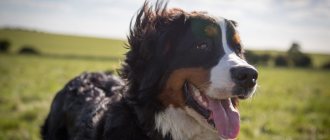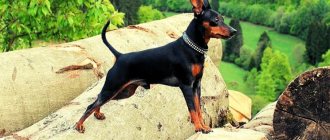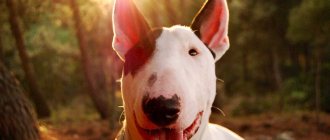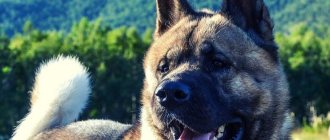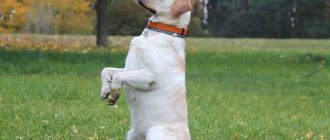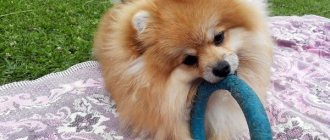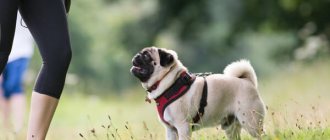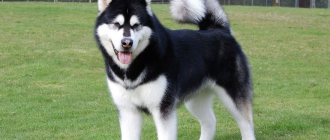Corgis are intellectually developed, efficient and hardy dogs. They have long been engaged in grazing livestock and driving poultry, and are now used as companions.
Short-legged, charismatic dogs will give a head start to representatives of larger breeds in terms of mental abilities, but this does not mean that they do not require training.
Let's try to understand the intricacies of training this breed, and whether it is possible to raise a corgi without the help of a professional.
Is it possible to train a Corgi?
Representatives of this breed are very smart and quick-witted. They are endowed with high intelligence and excellent memory. Like other shepherds, corgis quickly learn new commands and are easy to train.
It should be noted that restless and intelligent puppies get bored with monotonous activities, so Welsh Corgis are raised and trained in a playful way. During training, the mini shepherd is given tasks not only to increase mental abilities, but also to develop endurance.
Health
Welsh Corgis, like all herding dogs, are naturally endowed with good health and strong immunity. But there is still a predisposition to certain diseases:
- Spinal diseases - sometimes occur due to an elongated torso.
- Von Willebrand disease is a hereditary disease characterized by blood clotting disorders and spontaneous bleeding. Often leads to death.
- Epilepsy – accompanied by seizures.
- Hip dysplasia is a deformation of the joints, accompanied by severe pain and lameness.
- Raw eczema – skin lesions.
- Eye diseases.
- Degenerative myelopathy is a severe progressive neurodegenerative disease that leads to paralysis of the lower extremities.
- Cystinuria is the abnormal presence of cystine in the urine.
- Skin asthenia is a hereditary disease.
- Difficult childbirth occurs due to the fact that the bitch has 1-2 large puppies (especially if the dog is a firstborn). A caesarean section is often necessary.
With proper care, a Corgi can live 11-13 years. To keep your pet healthy, it is necessary to have timely vaccinations and preventive examinations at a veterinary clinic.
Corgi character and temperament
Corgis are cheerful and friendly dogs that do not know the feeling of fear. They are loyal to strangers and get along well with other pets.
Playful, curious and active, Corgis quickly become attached to people and need to communicate with their owners. With a lack of education or attention, they begin to get bored and look for entertainment that their owners may not like.
Mini Shepherds require mandatory education and training. Spoiled corgis often become stubborn or cunning.
How to instill in a puppy the skill of following the owner's orders?
When purchasing a puppy for home, most people hope to raise it into a reliable protector in the future. However, until the time when hope meets expectations, the pet can cause a lot of trouble until he learns to understand the meaning of commands, without which the puppy will be uncontrollable. The undertaking will require a lot of patience and perseverance from the owner of the future defender. Often, improper training of a corgi leads to disappointment; many complain about the unfortunate choice of a puppy who is not endowed with the ability to learn simple actions. Most likely, this is, in most cases, a deep misconception. The explanation is simple - the training method is incorrect. You need to look for an individual approach to any puppy, and adhere to the indispensable rule; up to a certain age, the pet must know one owner and get used to taking food only from his hands. This will be the beginning of mutual understanding between man and dog.
Basic rules of training
In order for training and raising a corgi at home to be effective, you need to follow several recommendations:
- The first classes are conducted in a quiet, calm environment. And only after the corgi has mastered what has been learned, training with the puppy is transferred to different busy places.
- During the process of raising a puppy, they are not allowed to do things that would be inaccessible to an adult dog.
- Raising and training corgis begin with practicing the simplest commands, gradually complicating the tasks.
- Corgi is not one of those who will perform the same command 10 times in a row. Therefore, training sessions for raising a puppy are structured so that they are not monotonous.
Important! In the process of training and raising a corgi puppy, you should not raise your voice or raise your hand at him. Screaming and hitting will not make the dog obey commands better, but will only frighten the animal and undermine its trust in its owner.
How long to train
Corgis need to be trained from an early age. But up to 4 months, puppies are unable to concentrate for long. Therefore, the first workouts should last no more than 5–10 minutes.
As soon as the corgi puppy gets tired and starts to get distracted, the lesson is completed. As your pet gets older, the duration of classes is gradually increased, reaching 25–30 minutes.
Rewards and punishments
In the process of raising and training a Corgi puppy, you cannot do without a system of reward and punishment. Each correctly executed command is reinforced with praise. The following are used as incentives:
- treats;
- favorite toys;
- verbal encouragement.
Undesirable actions are interrupted by a prohibiting command, pronounced in a loud, stern voice, or by tugging on the leash.
What should be prohibited
A properly raised Corgi should know what he can and cannot do. Therefore, from an early age, the puppy is shown the boundaries of what is permitted. The list of prohibitions includes:
- jumping on people;
- lying on the bed and upholstered furniture;
- begging for food from the master's table;
- barking for no reason;
- aggression towards people and animals.
Important! None of the family members should allow the corgi to do what others prohibit him. Otherwise, the puppy will not understand what is required of him, and the education process will be in jeopardy.
Pepper
At the same time, bell pepper seedlings are sown, which can be transplanted to a permanent place 50-65 days after germination. If you sow dry pepper seeds, it takes 10-12 days to germinate. Therefore, it makes sense to pre-wet the seed before swelling in a solution of some stimulant (for example, take Epin). Then the seeds need to be slightly dried to a free-flowing state and sown in the prepared container.
Training scheme by month
To avoid overtiring the corgi, training is carried out in stages. Classes are strictly limited in time, and tasks for the puppy are gradually made more difficult.
At 2 months
This period coincides with the puppy moving to a new home and with post-vaccination quarantine, so the little corgi is given some time to adapt and get used to the owners. At the same time, the puppy is taught:
- respond to nickname;
- going to the toilet while wearing a diaper;
- play only with your own toys;
- behave quietly when alone;
- Treat the collar and leash calmly.
Also during this period, the puppy is weaned from biting and damaging the owner’s property.
At 3 months
At this age, quarantine ends and the puppy goes outside for the first time. Now he is taught to go to the toilet outside the house and shown that he should not take treats from the hands of strangers.
Also, from 3 months, an important stage of education begins, which is called socialization. At this age, the Corgi puppy’s nervous system is developing, so as soon as he gets used to walks and is no longer afraid of the street, he is introduced to different stimuli.
This is done very carefully so as not to scare the baby. The puppy is taught to be calm towards strangers, strange animals, transport and loud noises.
At 4-5 months
A puppy of this age already has time to get comfortable both at home and on the street, so at 4-5 months the corgi often begins a period of disobedience. The puppy, having played with its relatives, pretends that it does not hear its owner and is in no hurry to run to his call. During this period, you can begin full training. At 4-5 months, a corgi puppy is taught:
- return to the owner on the first command;
- move around calmly on a leash and without a leash;
- be indifferent to treats scattered on the ground;
- follow the commands “Stand!”, “Sit!”, “Lie down!” and “Place!”;
- patiently wait for the owner at the shutter speed.
On a note. First, one command is practiced until it becomes automatic, and only then the development of the next skill begins.
From 6 months
At six months, the corgi begins puberty and the dog can re-test the boundaries of what is permitted, deliberately not following commands. Therefore, from 6 months, corgi training comes down to filling gaps in education and correcting unwanted behavior.
How to train an adult dog to behave outdoors
Going outside begins with selecting the right type of leash (for example, a classic short one), which not only will not cause unnecessary discomfort to the pet, but will also force it to stay close to the owner.
Many dogs feel excited just by the sight of a leash, not to mention the knowledge that they are about to go outside . The excited pet begins to pull on the leash and interfere with the owner in every possible way.
But before taking measures to suppress unwanted behavior, it is advised to understand what causes it. The reason for this is often the formed associative series: leash-walk.
Get ready to destroy it:
- Attach the leash to the collar, but do not go for a walk; on the contrary, continue to do your business.
- On average, the wait time takes 10-20 minutes before the owner goes to unfasten the leash.
- Repeat the steps until the dog loses interest in this item.
While walking, try to understand what causes the tendency to pull on the leash..
If you want to get to some place, then don’t follow the lead. Achieving a goal for a dog is akin to a reward, and not suppression of an action on the part of the owner is akin to encouragement.
Where to start training
At first, corgis are taught basic things. The puppy is accustomed to its owners, nickname, order in the house and to a diaper. Moreover, education begins immediately after the little corgi has moved to a new home and has slightly adapted to it.
Remember the nickname
This is the most important stage in raising and training a Corgi. Both the Cardigan and the Pembroke should remember their name from the first days. For this purpose, the puppy is called by pronouncing his name, and as soon as the baby pays attention to the owner, he is rewarded with a treat.
Getting used to the owner
Establishing close contact between the corgi and the owner will greatly facilitate the further education and training of the dog. In order for the pet to get used to the owner and the rest of the household, it is petted and occupied with games more often.
Housetraining a puppy to use the toilet in the house
While the baby is in quarantine and does not go outside, he needs to be accustomed to a diaper. At first, they cover the entire floor in the room, and then gradually remove them until only one remains, on which the puppy will go to the toilet.
We teach you to place and order in the house
Noticing that the little corgi is tired, the puppy is taken to the designated bed and left there, repeating the command “Place.” After a few repetitions, the baby will understand where to sleep and will begin to go to his own mattress on his own.
One of the main points of raising and training a corgi is weaning the puppy from damaging the owner's property. Noticing that the puppy is about to chew something, his intentions are stopped with a prohibiting command, pronouncing it loudly and with a strict intonation.
We train you to use a collar, leash and muzzle
Although Pembroke and Cardigan corgis are not large in size, they should not be walked without the appropriate equipment. Therefore, the key stage in the education and training of representatives of this breed is accustoming them to a leash and collar.
This is done gradually so as not to frighten the baby. At first, the collar is put on the puppy for just a few minutes, not forgetting to praise the pet and reward it with treats.
When the corgi stops paying attention to the collar, attach a leash to it and use a treat or toy to encourage it to follow you. After a few lessons, the puppy will learn to walk calmly on a leash.
Although Corgis are not aggressive towards people, there are situations when they need to be muzzled. Therefore, in the process of raising and training puppies are taught to wear this “accessory”. First, the dog is shown a muzzle with a treat hidden inside.
As soon as the dog begins to fearlessly stick his muzzle there, it is fastened and left on the animal for a short time. After a couple of minutes, the equipment is removed, and the corgi is treated to a treat.
Behavior on the street
To prevent the corgi from causing inconvenience to others, it is trained from puppyhood. A mini shepherd needs to be trained so that it does not pester passers-by or other people's animals.
And all attempts by the puppy to rush in pursuit of vehicles, dogs, cats or birds should be immediately stopped with a prohibiting command or a jerk of the leash.
How to train a puppy to toilet outside
Corgis are very clean dogs, especially if due attention is paid to this issue during the process of raising and training them. After the end of quarantine, the puppy begins to be trained to use the toilet outside.
To do this, the baby is taken out into the yard immediately after sleep or 15 minutes after eating. At first, you will have to take the puppy out at least 4-5 times a day. But over time, the corgi will grow up and learn to endure longer.
Getting used to veterinary examinations
The Corgi, like any other dog breed, should be vaccinated regularly and, if necessary, receive proper treatment. Therefore, in the process of raising and training a puppy, they are taught to take visits to the veterinary clinic calmly.
To do this, after each examination, the corgi must be praised and rewarded with a treat. You can also distract your puppy's attention with his favorite toy.
How to properly introduce corgis to children
So that the energetic and inquisitive puppy does not frighten the child, he is taken on a leash and brought to the baby. If the dog behaves too actively, he is pulled back with a jerk of the leash or stopped with a prohibiting command.
When the corgi calms down, he is brought to the child so that he can pet the puppy. After contact is established, the animal is allowed to play with the children.
Leek
Leeks are grown using the same principle. This vegetable does not boast early ripening and has a long growing season, but it allows you to get thick, vitamin-rich “legs” that, after harvesting, are perfectly preserved in the cellar for six months. For the sake of such pleasure, perhaps, it is worth taking some time with the seedlings and sowing the seeds in boxes filled with fertile soil in the second half of February.
Leeks are grown in seedlings
Command training
Trained corgis must unquestioningly follow the orders of their owner. To achieve perfect obedience from a mini-shepherd, it must be taught basic commands.
To me
This is one of the most important commands, so special attention is paid to its development in the process of raising and training corgis. The puppy is shown a treat by saying the command “Come to me.” As soon as he approaches, he is sure to be encouraged.
Near
The corgi is taken on a leash, placed to the left of itself and, pronouncing a command, is encouraged to follow itself. For correct execution of the order, the corgi is treated to a treat.
Voice
The puppy is seated in front of you, and a hand with a treat is raised above its muzzle, pronouncing the appropriate command. As soon as the corgi barks, he is praised and treated with a treat.
Sit
Hold a treat in one hand and raise it above the puppy. With the second palm, lightly press the Welsh Corgi’s croup, while simultaneously pronouncing the command “Sit!”
Place
The puppy is placed on its bed and held there, repeating the appropriate command. After a couple of minutes, he is rewarded with a treat and released. Gradually, the time the Welsh Corgi spends on the bedding is increased, and so that he does not have the desire to leave his place, toys are left for him.
Lie
A sitting puppy is ordered to “Lie down!” and lower a hand with a treat in front of his nose, at the same time lightly pressing on the withers. As soon as the Welsh Corgi follows the command, he is praised.
It is forbidden
This is an important prohibiting command, the execution of which must be brought to perfection. When a puppy wants to grab something from the ground, he is pulled back with a leash and commanded “No!”
Ugh!
This command has the same meaning as the previous one. Therefore, in the process of raising and training a puppy, it is enough to practice one of them.
Features of early sowing
It is worth remembering that the February sowing season has its own subtleties, so thoughtlessly filling window sills with seedling boxes and cups is unlikely to pay off in the future with a generous harvest of vegetables or lush flowering of ornamental plants.
This month allows seedlings to be sown only with late-ripening and slow-growing crops that have a long growing season. Therefore, before “gutting” the stocks of stored seeds, turn the packages over and carefully read the characteristics of each crop.
In February, crops with a long growing season are sown for seedlings.
The region where you live is also important. In February, residents of the southern regions can afford to sow seeds for seedlings, who will, without fear, plant the strong seedlings in open ground at the end of April or beginning of May.
The weather conditions of the Moscow region and other central cities are unlikely to allow seedlings to be transplanted into unprotected soil within this time frame. Therefore, at the end of winter, only those who have a greenhouse or greenhouse on their site will be able to enjoy the troubles of seedlings. But for residents of the northern regions, it’s probably too early to worry - February sowing in your case is justified only for owners of good-quality heated greenhouses.
The timing of sowing seedlings varies in different regions
Also, do not lose sight of one more point - the time of seed germination. When calculating the time for sowing seedlings, you must first decide on the moment of planting them in the ground or greenhouse in your region and count back the number of days required to grow seedlings at home. Then, from the received date, you need to subtract a few more days (or weeks), during which the seeds of the “calculated” crop will sprout and produce full shoots above the soil surface (that is, straightened sprouts with open cotyledon leaves).
Full seedlings are seedlings with open cotyledons
As a result, you can easily determine when exactly you can start planting and fill the window sills with the long-awaited green colors.
OKD
This is a special training program developed in the 1920s and slightly adjusted by modern dog handlers. It is necessary for comfortable coexistence with the dog and is aimed at teaching commands and developing an adequate attitude to various stimuli.
Classes on OKD (general training course) are conducted under the guidance of an instructor and take place in the form of group or individual lessons.
What should a dog be able to do?
The training is based on both the reinforcement of basic commands (“sit”, “come to me”, “fu”, “near”), and the completion of a general training course (GTC).
Also, due to the distinctive characteristics of the corgi, it is time to try their luck in various activities and competitions.
Currently, Welsh Corgis are not limited to just the status of a pet and are perceived more as a companion dog.
However, they are not predisposed to aggression, and therefore are not in demand in security activities, which cannot be said about a number of other specialties.
The breed is predisposed to:
- work in rehabilitation centers;
- search and rescue service;
- search work (search for things, prohibited means, etc.);
Why train
Training a dog at home has 3 goals:
- The pet must recognize the owner as a leader.
- The person will know well how to behave with the pet.
- A trained dog is a socially adapted pet.
The owner must choose whether to use deterrents or rewards for a motivational item.
The greatest impact is achieved when the dog receives praise right away.
Containment methods:
- Using objects that can attract the dog's attention. Things that make sharp sounds - whistles, a bunch of keys, a rattle from a tin can with pebbles, etc.
- If the actions are not followed, the dog loses the owner's attention. She is sent to her place without the usual stroking and praise, in a stern voice.
Pet restraint methods can be used on older puppies older than 4 months. If the dog is unbalanced, then this method should not be used.
Ignoring a pet is a more effective technique than physical influence.
Training is quite a labor-intensive task, but teaching a dog to behave correctly is easier than correcting inappropriate behavior.
Result:
All the rules described above are necessary in order to raise a calm, strong, obedient and intelligent dog. You need to follow them throughout your Corgi's life, but it will be easier if the puppy starts learning from birth.
Hello, my name is Alexandra Perelishina. I have been working as a practicing dog handler for many years, and I am also a professional corgi breeder. All this time I have been writing articles about corgi care, breeding basics and standards of this breed. I want to share my knowledge with all breed lovers.
Source
What to feed
A Welsh Corgi Cardigan dog can be kept on two types of food: natural and ready-made industrial food. Whatever type of diet is chosen, you need to monitor its quality and balance. It is important not to overfeed the animals - corgis are prone to overeating and gaining excess weight. Cardigans can beg for food - the owner will have to be firm in this matter.
Industrial feed
It is best to choose food of at least a “premium” class; they have a balanced formula and contain all the micro- and macroelements necessary for the dog’s growth and development.
The best brands of food for cardigans:
- Acana Regionals Wild Prairie Dog Grain Free;
- Orijen Adult Dog Fit & Trim Grain Free
- Acana Heritage Light & Fit Grain-Free;
- Guabi Natural Adult Dog Mini
- NOW Fresh Small Breed Grain Free;
- Farmina Natural & Delicious Adult Dog Mini Breed Lamb, Pumpkin & Blueberry Grain Free.
Natural nutrition
The basis of the diet for natural feeding should be lean frozen raw meat. They give it in the following dosage – 20 g. per 1 kg. dog's weight. 1-2 times a week, the meat portion is replaced with fish. They give you boiled sea fish fillet without bones.
Also on the dog's menu must be:
- offal, tripe;
- fermented milk products;
- vegetables;
- fruits;
- cereals, except semolina;
- bran;
- quail egg;
- vegetable oil;
- vitamin and mineral complexes.
Garden strawberries
February is a favorable time for planting strawberry seeds. With this method of growing, in a few months you will be able to get full-fledged strawberry bushes and save on the purchase of planting material, because rosettes of elite varieties are not cheap today.
Since seedlings of this berry crop sometimes have to wait up to 3-4 weeks, sowing is carried out already in early February. This will allow the mature rosettes to be transplanted into open ground in May or early June. In the next video you can see how to sow garden strawberries as seedlings.
"Place" indication
Command “Place” and entice him with a treat. On the lounger, praise and give a piece.
Gradually increase the time between arrival and reward, and then give treats occasionally. In everyday life, the “Place” command is used when a pet behaves badly (for example, begging from the table or jumping on guests).
By giving the "Place" command, you tell the dog exactly where he needs to go. They quickly grasp the meaning of this command and leave offended.
If he pesters you, then you need to command “Place” again in a more menacing tone.
Before teaching the “Place” command, make sure that the dog knows the “Lie” and “Come” commands.
Step 1: Place him on a long leash and make him lie down.
Step 2. Place a large item, such as a backpack, next to it. Do not use someone else's things or his things (muzzle, toy or bowl).
Step 3. Repeat the “Down” command to him and move away 5 steps.
Step 4: Wait 3 seconds and then command “Come.” When he approaches you, praise him.
Step 5. Give the “Place” command by pointing your hand at the backpack. Move towards the thing, but don't pull on the leash. As you walk, joyfully repeat: “Place. Place".
Step 6. Once in place, command “Down” and give a treat.
Repeat the exercise. Get him to go to the place without your help. Gradually increase the distance and stop using the leash.
The pet must approach the thing lying 15 meters away, lie down and wait (30 seconds) for you to allow it to leave the position. Teach him to stay still when people or animals walk nearby.
If the dog breaks away without a command, bring it back, repeating: “Place.” If the dog refuses to return to its place without you: call the dog left near the thing, sit it next to you and command “Wait.” Then show the dog the treat and go to the “spot” alone. Place it on your backpack and return to the dog. Command “Place”, and if the dog runs up to the thing and lies down, praise it and let it eat a piece.
Owner experience
Do not train your baby if you are in a bad mood, dogs are excellent psychologists, and your depression can rub off on them. Both puppies and adults copy their owner in everything; a loving dog will try to be with you.
Dogs are able to find a special approach to everyone in order to satisfy their whims. There are no two identical puppies or adult pets; each has a different character and habits.
His character in the future depends on training. It depends on you whether your pet will grow up to be a cheerful and devoted friend or a nervous, unsociable creature.
